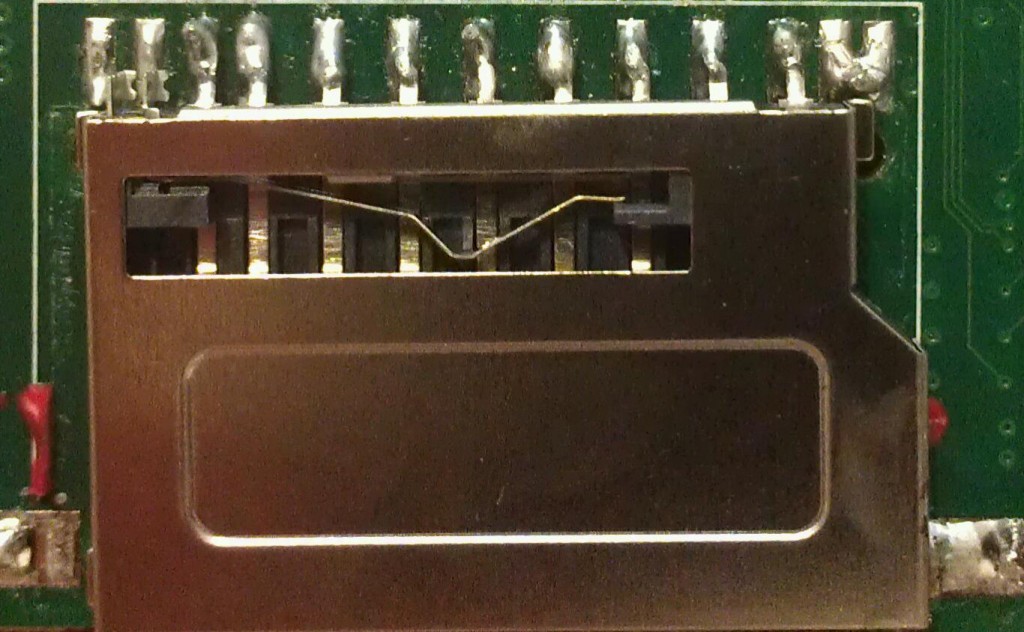A few months ago, the SD card socket on my original Raspberry Pi broke off to do an unfortunate smelting accident…No, not really. It was just dropped onto the SD card socket and snapped.
After some months of trying a few different fixes, I eventually gave up and bought a 512mb Raspberry Pi instead. But recently with some new ideas, I wanted another Pi to test out a few different things at once. Since I had a Pi lying around already, I decided to have another crack at fixing it.
I found a SD card socket that was almost a perfect fit for the Pi from Element 14 (SKU 2081361)
The old SD Card had already been de-soldered from my earlier attempts, so I just had to line up the pins and solder them down.
The end result came out like this –

There are 2 floating pins (on the left in the picture) that are used to detect whether the card is inserted, which are at the opposite end of where they should be, so I ended up just leaving them be, and on the Pi itself soldered the 2 pins that should have been connected there. This means that the Pi will always think that there’s a SD card inserted. Apart from those 2 pins, each and every other single pin lined up perfectly.
My soldering isn’t great so the SD card socket is a bit crooked, but the SD card still fits in beautifully in the case that I also purchased off Element 14.
After soldering, I inserted an SD card, and successfully booted up the Pi with the new SD card 😀
